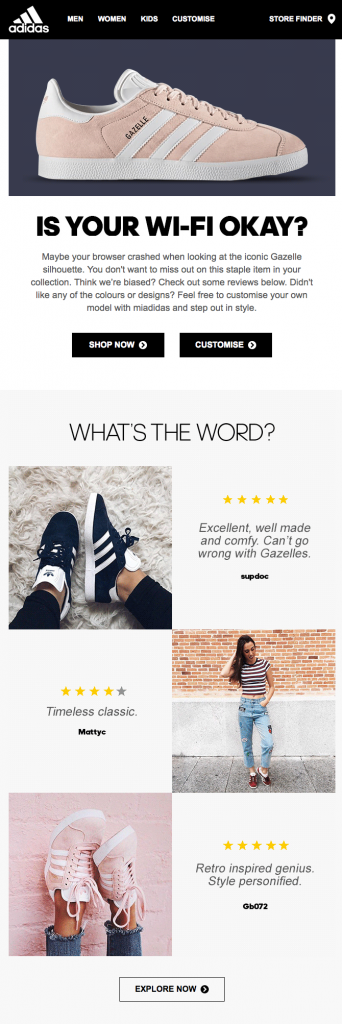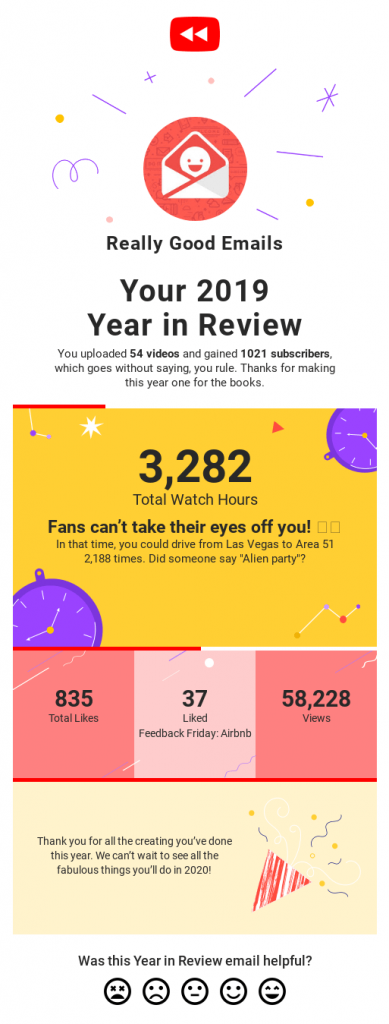Email marketing automation saves you precious time, money, and resources – which explains why the estimated spending for marketing automation tools is expected to reach $25.1 billion annually by 2023.
In fact, it has the potential to increase customer engagement, conversions, and retention. However, such a powerful tool doesn’t come without its burdens. If executed poorly, it can just as easily drive your business sales in the opposite direction.
By following these 6 email automation best practices you’ll be able to deliver highly targeted email campaigns that will ultimately, win over your subscribers and keep them coming back for more.
Know your audience segments
When you’re clear on who you’re targeting and why, you can better tailor your automation efforts. Begin by putting together an outline of your customer journey, creating a visual map of all the hoops a customer may jump though before converting.
You’ll be able to customise the type of content your sharing based on where they are in the customer journey. For example, a subscriber signing up to a newsletter may trigger an automated lead-nurture campaign with value-add content to build trust. When they move further down the sales funnel you’ll want to start weaving in your customer testimonials, like Adidas do in their automated abandoned cart email.

Tailor your content
When a subscriber receives your email they should feel like it was specifically made for them. Generic messaging can be off-putting, particularly for a customer that is in an advanced stage of the customer journey. You should be tailoring your content to individual subscribers and the data you have collected on them. Think about addressing them by name, including store locations based on where they live, or sending custom software plans based on their company size.
This ‘Year in Review’ email by Really Good Emails is based on a subscriber’s account activity. This automation serves the purpose of building a solid relationship with subscribers by recognising their progress achievements.

Hyper-personalised content has greater relevance to subscribers, and relevant content is a key factor in everything from click-through rates to customer retention. In fact, 67% of people who unsubscribed from a brand’s promotional emails did so because they received too many irrelevant ones.
FOR MORE PERSONALISATION TIPS, Read our blog: 4 Tips to Improve Your Email Marketing With Personalisation.
Understand your triggers
Determining when and why your emails should be sent is the best way to create effective automation and get your messages into your subscribers’ inbox when they need it most. Whenever you’re planning to set up a new automation workflow it’s important to make sure it doesn’t overlap with your existing ones. You don’t want subscribers to be bombarded with too many emails that are repeating content or have no relevance to them.
In general, there are two types of automation triggers:
- A behavioural trigger is when a subscriber fulfils a certain action.This could be when they subscribe, download a piece of gated content, or leave an unpurchased item in their cart.
- A time-sensitive trigger is determined by a date or time frame. This could be a set time-delay you’ve added to your automation, reminder emails sent before the day of an event, or an anniversary of a specific date, such as birthdays or subscription roll-overs.
Collect the right data
Subscriber data is your greatest asset, so make sure you’re capturing the right information from the very beginning. Start by creating sign-up forms that include the fields essential to your automations. Want to send your subscribers a birthday offer? You need to make sure that you gather this information when they sign up.
You should continue to update your customer data by collecting insights into how they interact with your emails and your business. We also recommend giving your database a regular hygiene check.
Use a multi-channel approach
Automation doesn’t have to be limited to email. If you’re not using a multi-channel approach, you could be missing out on opportunities to reach and engage your subscribers. Some of the messages you are sending may even be better suited to other communication channels, such as SMS.
If you’re looking to cut through the inbox clutter during the holiday seasons, then this email and SMS dynamic duo should definitely be part of your marketing strategy. With an average open rate of around 94% in Australia, SMS puts your messaging right where your audience is looking.
Want to take your campaigns to the next level? You can also incorporate social media marketing with your email marketing tool for automation with greater impact.
Measure your performance
Real-time insights will help you refine and improve your automations, ensuring they are delivering on ROI. There are plenty of metrics that you should be tracking, and your primary ones should align with your business goals. Vanity metrics like email opens may not be the best to focus on, particularly with Apple Mail’s recent updates to privacy protection. Instead, look at engagement metrics like click-throughs, conversions, and subscriber behaviour like unsubscribes.
Don’t make the mistake of thinking you can “set and forget” your automation workflows. It’s best practice to continue to monitor, analyse, and optimise your automation for the best results.
Want to try email automation for your business? You can create a free account with Vision6 and get started today.



